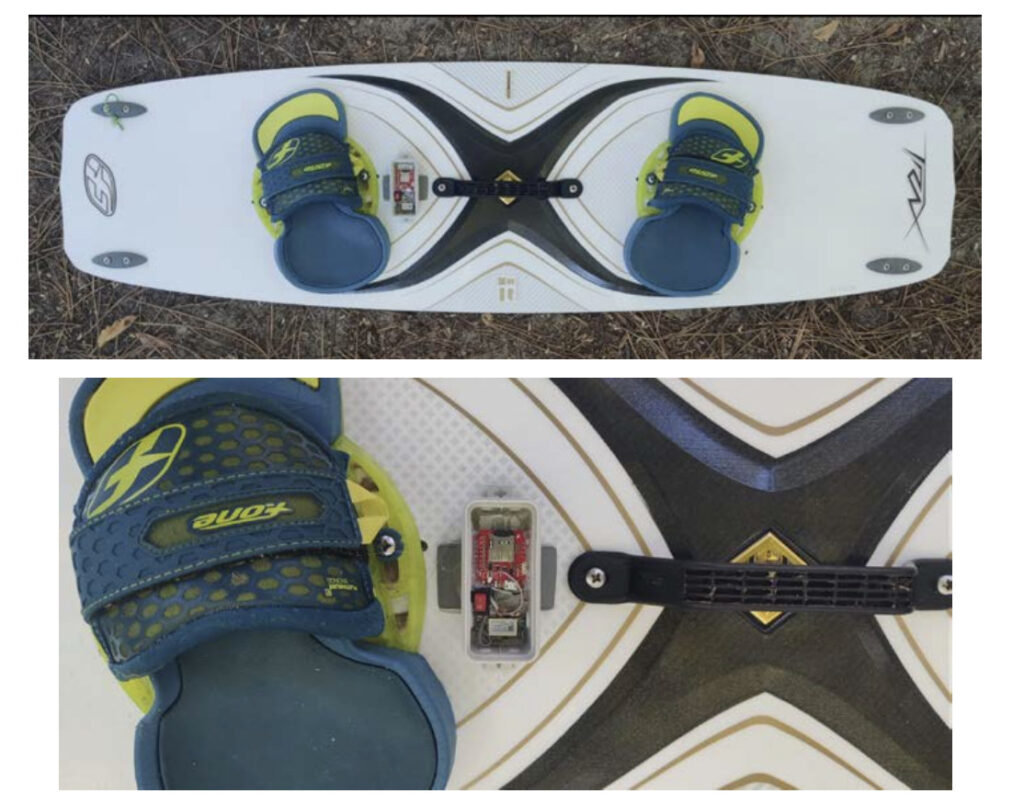KITESURF
INTRODUCTION AND MOTIVATION
Installation of the IMU on a table (task T3A): the system has been modified to be included in a box that ensures its tightness, and the first tests in this discipline have been carried out. The Figure shows the sensor pad installed on the kitesurf board during the tests.
DEVELOPED PROTOTYPE

RESULTS AND CONCLUSIONS
Validation tests (task T3B): the first field tests have been carried out in a real environment (Viano do Castello, Portugal), and the loss of some communication frames with the mobile phone due to the bluetooth link has been noted in this environment, despite which it has been possible to link it with the corresponding video. Therefore, the necessary tool is available for the analysis of future trials.
PEOPLE AND INSTITUTIONS INVOLVED
Isidoro Ruiz-García1
Ismael Navarro-Marchal2
Juan A. Moreno-Pérez1
P. Lorenzo Uhrich3
Alberto J. Palma1
Pablo J. Gómez-López2
Miguel A. Carvajal1
1 ECsens, Department of Electronics and Computer Technology, Sport and Health University Research Institute (iMUDS-UGR), Research Centre for Information and Communications Technologies (CITIC-UGR), University of Granada, 18071 Granada, Spain.
2 SkiingLab, iMUDS, Department of Physical and sport education, Sport and Health University Research Institute (iMUDS-UGR), University of Granada, 18007 Granada, Spain.
3Kustom Skis S.L., Calle Pérez Ayuso, 9, 28002 Madrid, Spain
This work was partly supported by Consejo Superior de Deportes through projects Sensor for Sport Monitoring and Sensor Sport Lab, “Redes de Investigación en Ciencias del Deporte” years 2021 and 2022, and European Regional Development Funds (ERDF).
Thanks also to Kustom Skis for allowing the prototype ski manufacturing at their facility.




